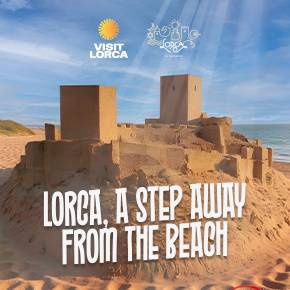Spanish News Today Editors Roundup Weekly Bulletin Apr 4
TOP STORIES: "Foreigners in Spain barred from using digital ID app" & "More than half of Spanish regions declared emergency zones following storm damage"
Hello all! In this week’s Spanish News Today Editor’s Roundup Weekly Bulletin, we bring you the news of the 12 autonomous communities in Spain which have been declared emergency zones due to all the destruction caused by the storms, not only in March but over the last six months, plus the new digital feature available to Spaniards which foreigners here are being locked out of for some unknown reason.
But before that, the truth is that the story on everyone’s lips this week has been Trump’s tariffs, but since we don’t want to give him too much airtime (egotists feed off the attention, good and bad), let’s get that bit out the way first:
America first, everyone else screwed
This week, the world’s favourite orange firestarter, Donald J. Trump, has decided that the best way to help the American economy is to kneecap everyone else’s. On Wednesday, Trump’s grand plan to
slap tariffs on almost everything in the whole world (unless it’s Russian) began to take shape.
This includes a universal 10% tariff on all imports to the US, which, according to Trump, is the United States’ “declaration of economic independence”. But some countries get a special punishment treatment, with tariffs ranging from 20% (European Union) to an eye-watering 54% (China). And just to make sure no one escapes the chaos, he’s also slapped a 25% tax on all foreign-made cars.
In the professional view of many economists around the world, this isn’t going to end well. The EU, unsurprisingly, is fuming. European Commission President Ursula von der Leyen has warned that these tariffs will send prices soaring, hit the most vulnerable the hardest and generally make life miserable for millions. Which is probably music to Trump’s ears.
Like the rest of the world, Spain is bracing for the impact of the tariffs. With the country’s car industry staring down a 25% tariff, and its wine and olive oil exports about to take a beating, President Pedro Sánchez has thrown together a €14.1 billion “economic shield” to try to soften the blow. Which right now feels a bit like giving a man a bucket while his house burns down.
In the financial markets, investors are reacting with the kind of calm you’d expect – stocks are plummeting, fears of inflation are rising and the dollar is looking shakier than Trump’s grasp of basic economics… not to mention common decency.
We’re still in the early days of the whims of this madman at the helm, but at the moment everyone is predicting years, if not decades, of economic misery, with the repercussions of this 78-year-old toddler’s tantrum likely to have very far-reaching consequences for the entire planet.
Storm fallout
Every day now environmental groups are warning us about the dangers of climate change and the very real impact our behaviours are having on the planet. The weather is one area where the evidence of this is very blatant and over the past six months, Spain has faced a series of devastating weather events that have left many regions reeling.
This week, the Spanish Government declared that 12 autonomous communities were so severely impacted by extreme conditions, from torrential rain to snowstorms, that they have fallen under what’s known as a civil protection emergency.
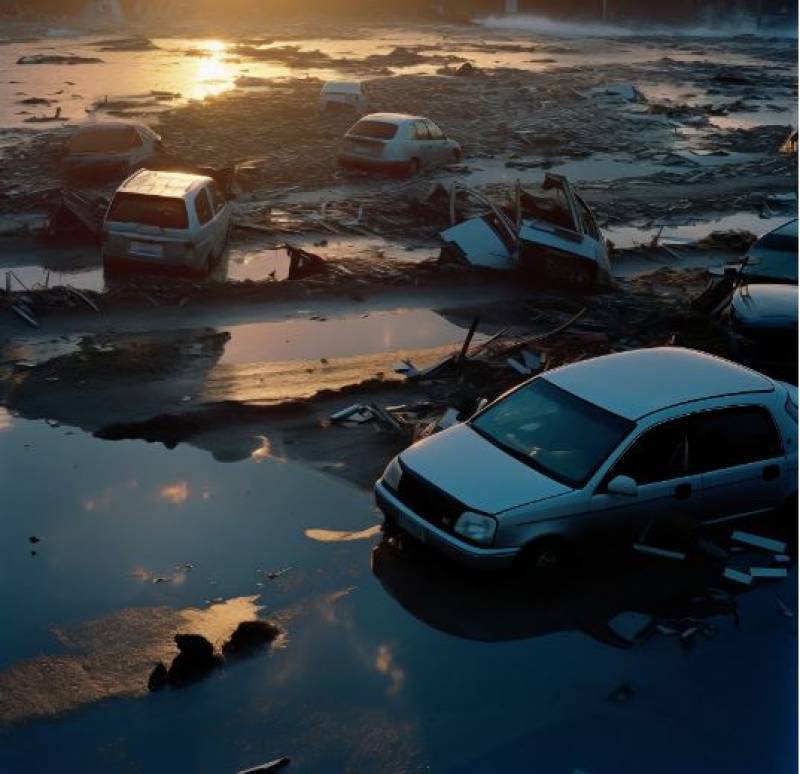
Between September 16, 2024 and March 24, 2025, these areas have endured incredible damage, triggering widespread disruptions to daily life and leading to numerous injuries and fatalities.
Incredibly, this doesn’t even include the DANA that hit the Valencian Community in October, over which more than €16.5 billion in aid has already been paid out.
March, in particular, was a month of relentless downpours that brought devastating floods, interrupted public transport and tragically claimed lives.
In the wider 6-month period, the
areas that have been pinpointed as emergency zones are located in the Region of Murcia, Madrid, Castilla y León, Extremadura, Andalucía, Castilla-La Mancha, Catalonia, La Rioja, Aragón, the Balearic Islands and Galicia, as explained by Interior Minister Fernando Grande-Marlaska.
Declaring these regions as civil protection emergency zones now means that the Spanish government can step in to provide support and financial aid to communities that have been affected by the devastating weather events.
MiDNI (pero no mi NIE)
From this week, people in Spain will be able to download the MiDNI app on their phones. This free app allows Spanish citizens to store their DNI (National Identity Document) digitally, making it easier to carry out various administrative tasks without needing the physical card.
Essentially, the DNI is a national identity card given to Spanish citizens, while the NIE is a unique identification number assigned to foreigners living in Spain. The government hasn’t explained why foreign residents are left out of this new digital system, leaving many of us wondering why we’ve been excluded.
Because the MiDNI app will be really handy. According to Interior Minister Fernando Grande-Marlaska, the app will be useful for procedures like voting, opening a bank account or even signing documents in person, such as before a notary. It can also be used to check into hotels, prove your age or rent a car.
At the moment, the app can only be used in Spain and isn’t valid for travel or international identification. It also doesn’t replace electronic signatures or allow for online identity verification, though that’s expected to come in 2026 with the app’s second phase.
Starting in April 2026, public administrations and businesses across Spain will be required to accept the digital DNI as a legitimate form of identification.
If you’re lucky enough to have a Spanish DNI and want to go digital, you’ll need to download the MiDNI app and complete a registration process. You can register in three ways: using your electronic DNI on the website
midni.gob.es, at the National Police’s Document Update Points (PAD) – which will be set up in town halls and police stations for the first time – or at any Documentation Unit when you renew or apply for a physical DNI.
It works on smartphones running iOS 14 or higher and Android 10.0 or higher. To activate it, you’ll need to create an eight-digit password and use either your fingerprint or facial recognition.
At the moment, there’s no word on whether the MiDNI app will ever be expanded to include NIE holders, but for now, foreign residents will just have to wait and see.
Murcia
Let’s start with the fun stuff for our Murcia section: days off work! After a fairly quiet March festivo-wise, April has decided to overcompensate with a whole load of Murcia holidays this month just begun, starting with Holy Thursday (April 17) kicking off a long weekend that will see many people basking in four to six glorious days of not time off.

Even before that, though, Cartagena celebrates its patron saint day on April 11, which includes everyone in the southern part of La Manga and all the way over to La Azohía and Isla Plana.
Those lucky enough to live in Murcia city, Abarán or Las Torres de Cotillas get an extra day off on April 22 thanks to Bando de la Huerta and Día de la Mona, while folks in Los Alcázares, Ceutí and Jumilla will be raising a glass to Easter Monday (April 21). There are several more local festivos in other municipalities around the Region later in the month, too, which you can
see here.
Talking of special dates, income tax season has begun! In Murcia, there are
some new tax deductions available this year, including up to €300 for children’s language lessons and another €300 for high-speed internet in small towns with fewer than 15,000 inhabitants. Large and single-parent families who bought or expanded their homes in 2024 can claim up to €5,000 off their income tax this year, while anyone who made improvements to their home to reduce energy consumption bought a plug-in electric or fuel cell car in 2024 can also enjoy significant deductions.
In other news, the Region of Murcia was hit with an absolute horror show last Monday when a
motorcyclist tragically lost his head – literally – on the RM-422 dual carriageway. A passing driver made the grim discovery and, understandably, authorities didn’t bother sending medical assistance because, well, there wasn’t much left to assist.
The motorcyclist has since been identified as a 51-year-old resident of Fortuna, who had been out riding alone when tragedy struck shortly before 10.30am. Initial reports suggest he lost control and hit a guardrail, in what is being treated as simply an awful accident.
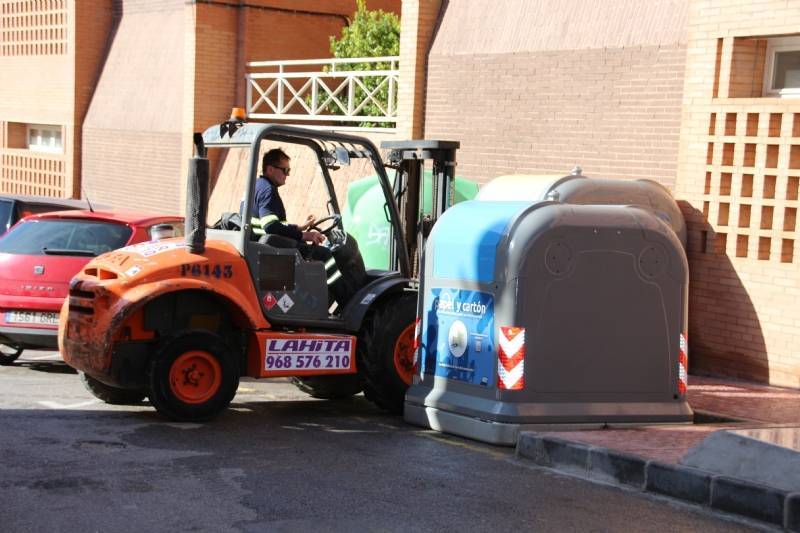
In Alhama de Murcia this week, the Town Council has decided to tackle the ever-growing problem of garbage mountains by
installing more bins in key locations around the municipality, and a thorough clean-up of rural dumping sites is underway at the same time. The council has also updated its waste management contract, investing in fancy new cleaning equipment and introducing colour-coded bins for different types of rubbish.
Unfortunately, if history is anything to go by, a certain segment of the population will continue to treat dustbins as a mere suggestion rather than a civic duty, but at least the council is taking the steps it can.
Residents of
all parts of Camposol’s Sector D can now collect their official notifications regarding Mazarrón Council’s long-delayed takeover of the urbanisation’s public elements. It’s hoped that the entire notifications process, which has been dragging on for over a year now, will be concluded before the end of this month, after which the real work of moving Camposol into the council’s hands and letting them do some work to fix the roads can finally move ahead.
Los Alcázares has once again
added to its collection of urban artwork, helping to make the town even more aesthetically pleasing than it already was and giving regular visitors a new piece of art to discover. The town is fast becoming an open-air museum of street art, and the latest addition, a mural titled ‘Primavera en tus ojos’ (Spring in your Eyes), was created by a group of four young artists in Los Narejos.
Don’t forget you can always check our EVENTS DIARY for more events and activities coming up soon in the Region of Murcia:
Spain
Big changes are coming to waste collection in Spain, and they’re far from kind to our pockets. Following pressure from the EU, all towns with more than 5,000 residents will soon introduce a
new rubbish collection tax.
Starting this month, homeowners will be responsible for covering the cost, which will help fund waste disposal, transportation and landfill maintenance.
How you’ll pay this extra charge will depend on where you live. Some towns will introduce a separate charge, while others will tweak existing property taxes to include it. If current rates don’t cover waste management costs, councils will have to adjust accordingly.
Right now, the average garbage tax in Spain is about €84.64 per year, according to the Spanish Consumer Organisation (OCU). However, this number is expected to rise significantly in 2025.
The actual cost will vary by city: some places will have a flat rate, while others will base the fee on factors like property value or water usage.
Each municipality is unique and there is no one price that can be applied to all of them, but according to estimates from the sector, for a current bill of €120 per year (which represents 40% of the service costs), households would have to pay €180 more: €300 in total.
It’s actually the liquid in e-cigarettes that will be taxed rather than the devices themselves, and the idea is to bring the cost of these smoking products more in line with traditional tobacco and cigarettes.
The new tax will impose a 15 cent per millilitre charge on e-cigarette liquid that does not contain nicotine or that contains 15 milligrams of nicotine or less; a 20 cent per millilitre charge on e-cigarette liquid that contains more than 15 milligrams of nicotine per millilitre; a 10 cent per gram charge on nicotine pouches; and a 10 cent per gram charge on other nicotine products.
In practice, this means that an average 10ml vape cartridge will now cost €1.50 more.
On top of the new vape tax, selling e-cigarettes to anyone under 18 is now banned and vaping is no longer allowed in schools, other educational centres or parks. Advertising e-cigarettes during children's TV hours is also prohibited.
Vaping liquid labels must now list all ingredients, include a health warning (“Consuming this product is harmful to your health”), and come with a leaflet detailing usage instructions, storage guidelines, contraindications and potential side effects.
The new rules will also put restrictions on the use of flavourings in the e-cigarette liquid.
Finally, there’s some bad news for commuters and travellers. Even though the Ministry of Transport and the main train driver unions reached an agreement to call off the strikes, the CGT railway union isn’t backing down. They’re
going ahead with their planned industrial action from Tuesday April 2, arguing that the new contract “guarantees absolutely nothing”.
To add to the disruption, union members have planned rallies at Sevilla and Málaga train stations and a bigger protest in front of the Ministry of Transport in Madrid.
While this isn’t a total shutdown, Renfe is warning passengers to expect delays and disruptions across the country since the strikes affect train services nationwide. B as long as the industrial action keeps running, the government is obliged to ensure that minimum services are running in order to keep things moving.
If you’ve got travel plans, it’s a good idea to check train schedules in advance on the Renfe website or call 0034 912 320 320 to avoid any surprises.
Alicante
According to eyewitnesses, the groom-to-be fell backwards off his chair and hit his head on the floor. Staff at the bar attempted to resuscitate him with CPR while waiting for an ambulance, but their efforts were unsuccessful. Paramedics arrived to find the man had already passed away.
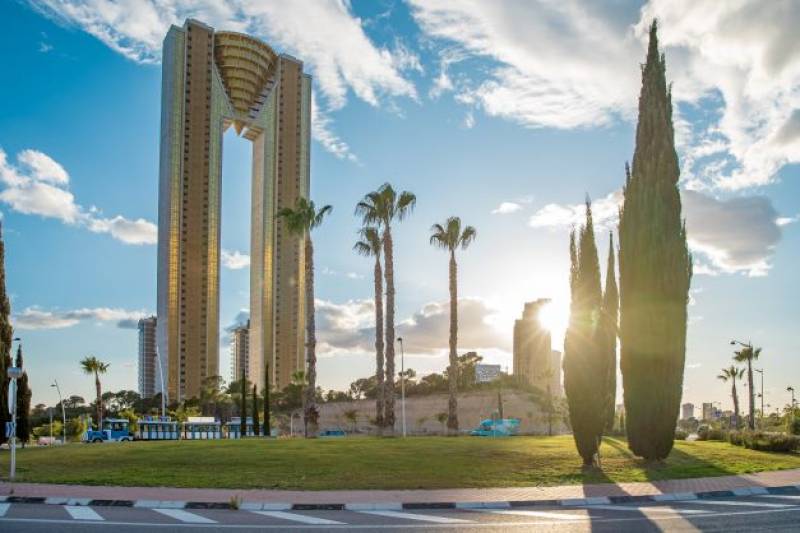
The incident has shocked the British community in Benidorm, with many taking to social media to express their condolences. One tourist had earlier posted a message asking if the man was okay, only to be met with the devastating news that he had died.
It’s been reported that the man had a pre-existing heart condition, which may have contributed to his death.
Just a day after this tragedy, the Costa Blanca’s favourite resort town witnessed another dramatic scene. On Monday March 31, a 27-year-old British tourist found himself in a precarious situation when his
attempt to climb down from his balcony went awry.
The holidaymaker, who was staying in a central Benidorm apartment complex, had decided to exit through the balcony and scale down the side of the building. However, his plan quickly fell apart when he became stuck on a neon sign belonging to a real estate agency, just a few metres above the ground. With no clear way to get down, he was left perched on the sign, helpless and stranded.
Needless to say, a bemused crowd quickly gathered below and emergency services were called to the scene. Local and national police, firefighters and paramedics worked together to rescue the stranded tourist, using a truck and ladder to safely bring him back to the ground.
Fortunately, the man was unharmed and able to walk away from the ordeal after taking a moment to recover on the footpath.
Unlike the tragic events of the previous day, this incident had a happy ending, with the police confirming that the tourist wouldn’t be fined for his escapade, but it still seems like the start of silly season is upon us early this year, when we get ‘balconings’ almost weekly.
As Benidorm continues to make headlines, neighbouring Torrevieja is focusing on more positive developments. The city has taken a significant step forward in the
creation of a state-of-the-art Maritime Museum and the Eras de la Sal (salt mines) complex, a highly anticipated project that promises to enhance the area’s cultural and leisure offerings.
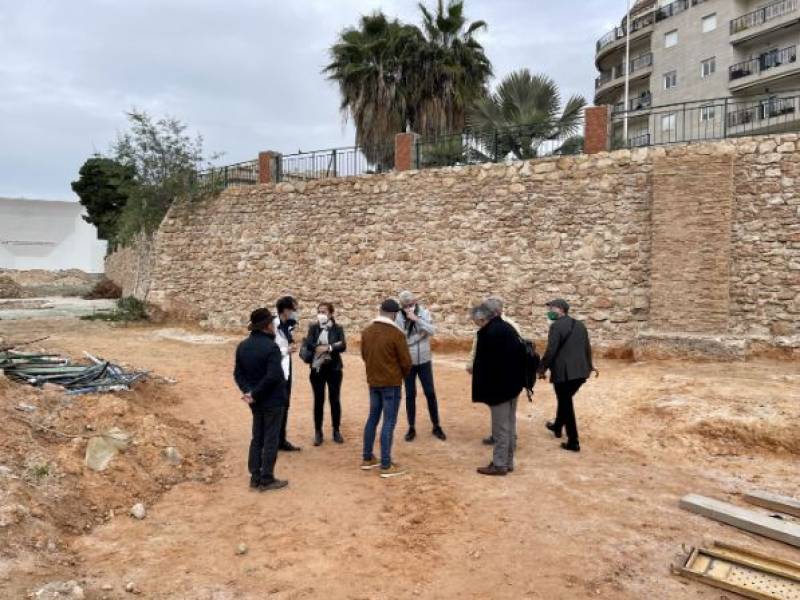
The City Council has published its intention to use land near the port for the project, a crucial administrative step that paves the way for the final stages of development. The ultimate plan is to build an open-air multipurpose auditorium, designed as an amphitheatre open to the sea, which will host the annual International Habanera Competition and other cultural events.
The project, which spans 12,542 square metres, will also include the development and landscaping of the International Marina boatyard, as well as the reorganisation of the existing car park and the pedestrianisation of the area. The goal is to create a seamless connection to the future Paseo de la Sal and the beautifully landscaped Calafates Park, which links to Acequión Beach and Doña Sinforosa Park.
With a budget of €660,000 and designed by the award-winning company Paredes Pedrosa Arquitectos, the project is divided into seven zones and actions, including the Eras de la Sal, Museo del Mar and the complete redevelopment of the boatyard and surrounding areas.
The public now has 15 days to submit any objections to the project before the council begins the next stage of the development.
Andalucía

Good news for those who like to discover Spain by train but don’t want the pain of changing at stations again (strikes not withstanding) – Renfe has pulled off the impossible: a
high-speed train service between Andalucía and Catalonia that doesn’t require a mandatory pilgrimage through Madrid’s Atocha station!
This new AVE route, which will be launching on April 23, will whisk passengers from Sevilla to Barcelona in just over six and a half hours, stopping in Córdoba on the way. It still stops in Madrid briefly, but at least now passengers won’t have to get off there to be herded onto a new train. It even continues to Figueres, for those who fancy a spontaneous visit to the Dalí Museum.
Of course, not all journeys end quite so smoothly. In Málaga, a tragic and deeply unsettling incident unfolded as a
Ukrainian couple, aged 64 and 60, leapt from their eighth-floor apartment in what police suspect was a suicide pact. Witnesses, hearing what they initially thought was an explosion, rushed to the scene, only to find the couple on the pavement below.
Investigators ruled out foul play, gender violence and even an actual explosion… though some residents were adamant that a second body was thrown out later, which certainly raises more questions than it answers. The couple, who hadn’t lived in the area for long, now leave behind a haunting and unexplained tragedy that has deeply shaken the neighbourhood.
Thanks to a March that the Spanish would describe as ‘
pasado por agua’,
water levels in Andalucía’s reservoirs have doubled on what they were at this time last year. They are now at 58.8% of capacity, up from the dismal 19.3% recorded at the start of the year. That’s the equivalent of 882,000 Olympic-sized swimming pools.
The Guadalquivir basin now holds 4,783hm³ of water, and even Málaga’s perpetually struggling La Viñuela reservoir is looking slightly less tragic. While some areas, like the Tinto, Odiel and Piedras reservoirs in Huelva, have actually lost a bit of water, the overall situation is vastly improved. In short, March delivered enough rain to keep Andalucía hydrated for the foreseeable future (assuming the region doesn’t immediately squander it with overzealous irrigation and golf course maintenance!).
Lastly, beachgoers in Almería were treated to an impromptu marine biology lesson recently when a 2.2-metre-long bluntnose sixgill shark decided to take its final bow on the city’s El Zapillo beach. Sadly, this wasn’t some majestic ocean encounter but rather a very
dead shark washing up on shore, much to the horror and fascination of those present.
The bluntnose sixgill, affectionately known as the cow shark, usually lurks in deep waters up to 2,000 metres below the surface of the Mediterranean. Every now and then, however, these creatures make a surprise appearance near the coast, either while breeding, chasing prey or just being plain lost.
Despite their somewhat intimidating appearance, they pose no real threat to humans… unless you count their curious habit of investigating things with their teeth. If you ever spot one alive, the general rule is to quietly back away and let it do its thing, which, quite frankly, is solid advice for dealing with most creatures in the wild.
You may have missed…
- Wonky fruit and leftovers: Spain enforces new rules for supermarkets and restaurants.
Spain’s Law on the Prevention of Food Loss and Waste was approved way back in 2021 but after a series of delays and push-backs, it’s finally set to be enforced from Thursday April 3. In a nutshell, it means that supermarkets will have to sell ‘wonky’ or ‘ugly’ fruit and veg at a discount, and restaurants and bars will have to provide free containers for leftover food.
- Did you know? Spain doesn’t celebrate April Fools’ Day!
This Tuesday just gone was April Fools’ Day, but you could have been forgiven for not noticing in Spain, since they have their practical joke day on a different day of the year. No joke!
- The most stolen car in Murcia revealed – and it might not be what you expect.
Despite being one of Spain’s safest regions for car theft, Murcia has a clear favourite among criminals, according to a recent survey.
- Spain brings back grants for electric cars to boost sales.
After scrapping the initiative at the start of the year, the Spanish government has decided to reactivate the Moves III programme in a desperate attempt to boost floundering electric car sales.
- Spanish homeowners with tourist licenses face 20% community fee hike.
The Spanish government has just approved legislation that means from April 3, residential communities will be able to vote on whether or not to allow new tourist rental apartments and properties to operate within the community. Moreover, if the committee does allow a property owner to apply for a tourist licence, they can now increase the community fees for that house or apartment by up to 20%!
And there we have it. Thanks for reading this week. I hope you liked it because we’ll be back with another edition for you next week.
See ya!





 Between September 16, 2024 and March 24, 2025, these areas have endured incredible damage, triggering widespread disruptions to daily life and leading to numerous injuries and fatalities.
Between September 16, 2024 and March 24, 2025, these areas have endured incredible damage, triggering widespread disruptions to daily life and leading to numerous injuries and fatalities.
 Even before that, though, Cartagena celebrates its patron saint day on April 11, which includes everyone in the southern part of La Manga and all the way over to La Azohía and Isla Plana.
Even before that, though, Cartagena celebrates its patron saint day on April 11, which includes everyone in the southern part of La Manga and all the way over to La Azohía and Isla Plana. In Alhama de Murcia this week, the Town Council has decided to tackle the ever-growing problem of garbage mountains by installing more bins in key locations around the municipality, and a thorough clean-up of rural dumping sites is underway at the same time. The council has also updated its waste management contract, investing in fancy new cleaning equipment and introducing colour-coded bins for different types of rubbish.
In Alhama de Murcia this week, the Town Council has decided to tackle the ever-growing problem of garbage mountains by installing more bins in key locations around the municipality, and a thorough clean-up of rural dumping sites is underway at the same time. The council has also updated its waste management contract, investing in fancy new cleaning equipment and introducing colour-coded bins for different types of rubbish.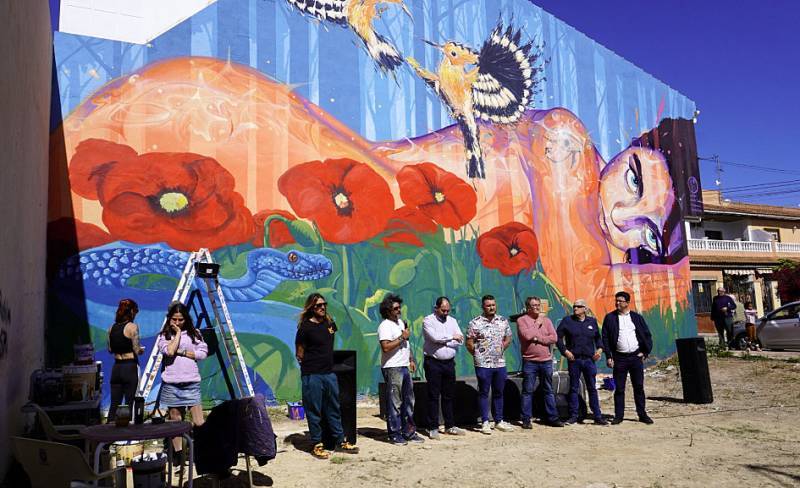

 The incident has shocked the British community in Benidorm, with many taking to social media to express their condolences. One tourist had earlier posted a message asking if the man was okay, only to be met with the devastating news that he had died.
The incident has shocked the British community in Benidorm, with many taking to social media to express their condolences. One tourist had earlier posted a message asking if the man was okay, only to be met with the devastating news that he had died. The City Council has published its intention to use land near the port for the project, a crucial administrative step that paves the way for the final stages of development. The ultimate plan is to build an open-air multipurpose auditorium, designed as an amphitheatre open to the sea, which will host the annual International Habanera Competition and other cultural events.
The City Council has published its intention to use land near the port for the project, a crucial administrative step that paves the way for the final stages of development. The ultimate plan is to build an open-air multipurpose auditorium, designed as an amphitheatre open to the sea, which will host the annual International Habanera Competition and other cultural events. Good news for those who like to discover Spain by train but don’t want the pain of changing at stations again (strikes not withstanding) – Renfe has pulled off the impossible: a high-speed train service between Andalucía and Catalonia that doesn’t require a mandatory pilgrimage through Madrid’s Atocha station!
Good news for those who like to discover Spain by train but don’t want the pain of changing at stations again (strikes not withstanding) – Renfe has pulled off the impossible: a high-speed train service between Andalucía and Catalonia that doesn’t require a mandatory pilgrimage through Madrid’s Atocha station!









